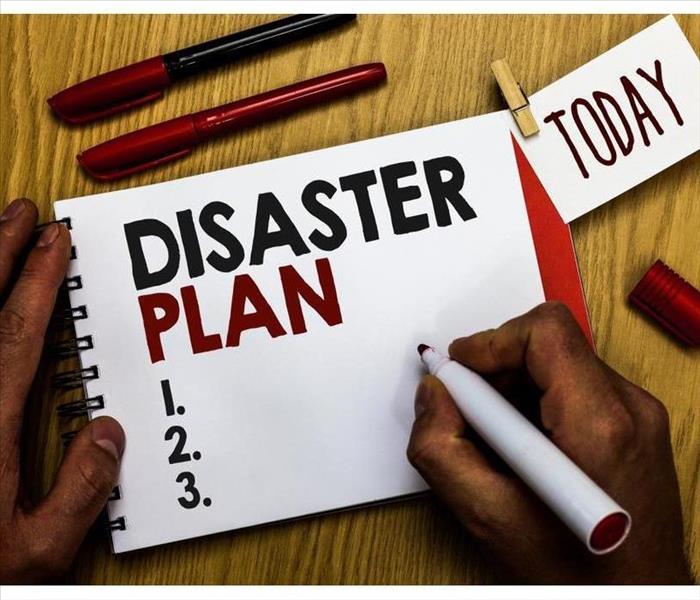What Is Your Emergency Disaster Plan?
12/5/2022 (Permalink)
What Emergency Disaster Plan Do You Have?
Every business has a responsibility to its employees and customers to have an emergency plan in place. This can be as simple as having a fire extinguisher and first aid kit in the office or as complicated as a detailed plan that covers everything from evacuation routes, employee communication, and more. The reason for this is simple: the more prepared you are for emergencies, the less likely they are to happen in the first place!
Identify Hazards
The first step to creating your Emergency Disaster Plan is to identify all possible hazards that can occur on your property. These include, but are not limited to:
- Fire, smoke and/or soot damage
- Storm events
- Water leaks or flooding
- Bacteria or mold growth (from floodwaters, sewage backup or other water sources)
- Wet or damp items that can attract insects and pests.
Plan for Business Continuity
When you are planning for business continuity, it's important to identify key functions that must operate during and after an emergency. Determine the critical assets that will be needed to support these key functions.
Identify multiple alternate business sites where your company can relocate if a facility becomes inaccessible or unusable due to damage or other disruption. Identify primary, secondary and tertiary locations based on their proximity to your customers and suppliers as well as their ability to provide the necessary services and products.
Identify alternate communications networks so you can continue communicating with customers during an emergency. Also consider using alternative modes of communication such as email, text messaging systems or social media postings in lieu of telephone calls if possible.
Document Your Plan
Keep a copy of your emergency disaster plan in a safe place, such as a locked filing cabinet, safe, or in the cloud online. You should also make sure that all employees have read and understand the plan. If you have an employee handbook, include information about the plan in it.
For each employee on your staff, include their name and contact information on a list of people to call in case of an emergency. This will ensure that you can reach anyone who needs help quickly during an emergency.
Make sure to update this list whenever someone is added or removed from the company’s roster; this includes when new employees start working at your business and when others leave.
Implement Your Plan
- Have a backup plan in place.
- Be prepared to communicate with employees, customers, vendors and the media.
Employees should be well-informed about potential disasters
It’s important that all employees know about the emergency plan, both in order to follow it, and in order for them to be prepared for any situation. Before a disaster strikes, your employees should be familiar with where they are supposed to go in an emergency, what steps they need to take, and who they should contact if there is no one else available by phone. They should also rehearse their role in the plan so that when an actual emergency occurs, there won’t be any confusion about what needs to happen next. If there is no time for training or rehearsal during an actual emergency (or if some people miss key training sessions), remember that most people will instinctively do whatever they can while waiting for instructions from those with higher authority.
In addition to knowing the general procedures of your company's response plan (e.g., evacuating), employees should know how best way contact 9-1-1 or other emergency services if necessary.
An emergency disaster plan is a valuable asset for any business. It can help ensure that your company stays afloat in times of trouble, and it will give you a clear picture of what needs to be done in case disaster strikes. Having such a plan in place is also key to keeping employees safe and well-informed about potential dangers.






 24/7 Emergency Service
24/7 Emergency Service
